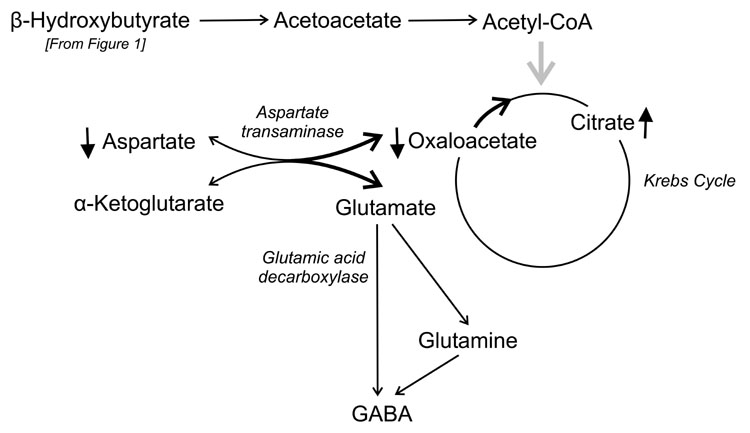Figure 2.
Alterations in the metabolism of excitatory amino acids and γ-aminobutyric acid (GABA) during the high-fat, low-carbohydrate ketogenic diet. Metabolism of acetyl-CoA generated from fats leads to high consumption of oxaloacetate (see Fig. 1). L-Aspartate, a nonessential amino acid, is formed by the transamination of oxaloacetate with an amino group from glutamate. Reduced availability of oxaloacetate along with robust availability of α-ketoglutarate from high activity of the first part of the Krebs cycle leads to low aspartate levels. It has been hypothesized that more glutamate is thus accessible to glutamic acid decarboxylase for production of GABA [33]. Not all Krebs cycle intermediates are shown in the schematic.

